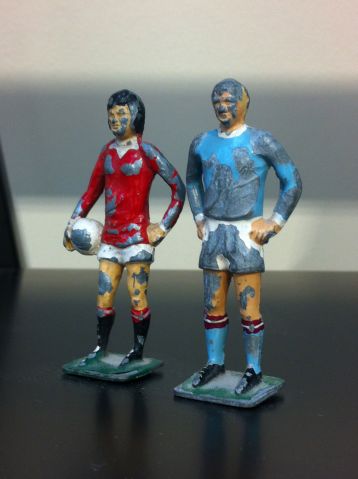‘The subject of our mortality is one that has always fascinated me -the fragility of life versus the permanence of objects, in particular …’
A Facebook memory popped up on my timeline over the weekend and made me want to touch base with my ‘Keeping It Going’ blog again. The memory showed a photo of a piece of work that was inspired by objects which belonged to my late Nana. The memory also included a blog post from the same period and it was fascinating to recap and go back two years in time, particularly in terms of world news – politics, specifically. So much has happened!
‘Nana’s Colours’ Part of an ongoing series of assemblage work in tribute to a dear grandmother.
But, as well as what’s been going on globally, the blog post also reminded me about how much of my creative work continues to focus around the life of my late grandmother (Nana) and the many objects associated with the home in which she lived for some 70 years.
It also made me think about my recent involvement in an Arts Council funded project, The Museum for Object Research, created and led by artist Sonia Boue. The proposal I submitted for the Museum sums up the way in which the ‘Nana’s Colours’ body of work began and continues to evolve; how the mass of objects that make up my own personal collection provides the vast majority of raw material for creating work. The proposal I submitted to The Museum for Object Research is very relevant to the overall theme of my work with objects and for this reason, I have included it here:
I propose to build on an existing body of work, ‘Nana’s Colours’ which was inspired by the small collection of things that I gathered from my Nana’s home when she was finally forced to leave it. In the five years since my Nana’s death, I have combined the various items I rescued from her home with others from my extensive lifetime collection to create small assemblage works.
The source material is diverse – china, glassware, fabrics, soaps, powders, paper, plastics and so on – but the objects selected are all steeped in social history and speak volumes about my Nana’s identity, age and social standing and of course, my relationship with her.
The small celebratory assemblages are an ongoing testimony to the relatively simple existence my Nana lived in a small Cambridgeshire village. She lived until the grand age of 102 and the work demonstrates how much life has changed over the past century, particularly in relation to the things we own nowadays – the things we have in our homes and make use of.
Examining my late Nana’s objects in this respect is extremely poignant, homing in on deep-rooted childhood memories around family and relationships – love and loss. The objects still exist – my Nana sadly, no longer does. The subject of our mortality is one that has always fascinated me – the fragility of life versus the permanence of objects, in particular. The objects live on, our emotional attachments projected onto them, and become enriched with the assorted narratives and stories surrounding them.
The Museum for Object Research touches on a recurring theme in my work around the question of value and worth. What is an object ‘worth?’ How do we put a price on certain items? As it stands alone, a used powder puff has no monetary value. If however, it’s one that my Nana used, then it becomes imbued with a highly personal history and narrative. Its emotional value is enormous – it’s worth an awful lot to me. People pay thousands of pounds for John Lennon’s glasses, or even Elvis’s hairdryer. Shouldn’t objects that belonged to ‘ordinary’ people be celebrated too?
*******
The end of summer 2017 is set to be an eventful and symbolic time; my twin sons leaving for respective universities will undoubtedly have a big impact on the amount of spare time I’m going to have. It will be a time of massive change and readjustment for all of us as a family and only time will tell how much of my sons’ leaving will affect my creative output. I’ll be back at some point in the future to report back, I’m sure …
In the meantime, you can read more about The Museum for Object Research – the premise behind the project, the participating artists and so on – by following this link:
https://museumforobjectresearch.wordpress.com/



